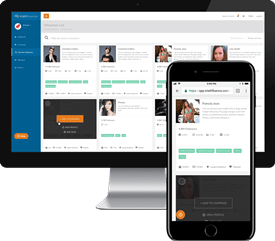User-generated content (UGC) is a powerful tool leveraged by marketers and brands to foster authentic engagement and build trust with consumers. But what is UGC, and why has it become an essential element in modern marketing strategies?
What is UGC?
If you’re a content creator or brand, you’ve probably heard the abbreviation UGC and might be wondering, what does UGC stand for? UGC, which stands for “user-generated content,” refers to any content, such as images, videos, reviews, blog posts, and social media posts, that is created voluntarily by individuals rather than brands. Simply put, UGC content originates directly from customers or users, rather than being produced by professional marketers or paid influencers.
UGC includes a wide variety of formats:
- Reviews and testimonials
- Social media posts (Instagram, Twitter, TikTok)
- Videos and photos shared on platforms like YouTube, Instagram, or Snapchat
- Blogs and articles written by users or customers
- Forum discussions and community comments
Why is UGC Important?
User-generated content has grown increasingly important due to shifts in consumer trust and marketing effectiveness. Here are several reasons why UGC plays a crucial role in marketing:
- Authenticity and Trust
Consumers today are skeptical of traditional advertising and branded messages. They crave genuine recommendations and experiences from fellow consumers. UGC offers an authentic voice because it comes directly from peers, which significantly boosts its credibility. This authenticity fosters trust and confidence among potential buyers.
- High Engagement Rates
UGC typically enjoys higher engagement rates compared to traditional marketing content. Since consumers are creating content around products they love, the resulting posts often resonate more deeply with their networks. Social media posts featuring UGC typically garner more likes, shares, and comments than brand-generated content.
- Customer Loyalty and Community Building
When consumers contribute their own content, they develop a deeper connection to the brand. Creating UGC makes users feel valued and seen, strengthening brand loyalty and fostering a vibrant community. Brands that effectively leverage UGC often build communities around their products, enhancing long-term customer retention.
- Cost-Effectiveness
UGC provides a cost-effective alternative to traditional advertising. It leverages customer enthusiasm to generate promotional content organically, reducing the need for costly content production and paid advertising campaigns.
- Enhanced SEO
UGC can also boost search engine optimization (SEO). Reviews, testimonials, and discussions naturally contain relevant keywords and fresh content, improving a website’s search ranking and visibility.
UGC vs. Traditional Brand-Customer Interactions
Understanding how UGC compares to traditional brand-customer interactions highlights its unique advantages:
Traditional Marketing:
- Controlled Messaging: Brands control every aspect of content creation and dissemination.
- Lower Trust Levels: Consumers perceive brand-driven messages as biased or sales-oriented.
- Higher Costs: Professional content creation and media buying can be expensive.
- Limited Engagement: Interaction is typically one-way, from brand to consumer.
User-Generated Content:
-
- Authentic and Genuine: Real-world experiences shared by users.
- Enhanced Trust and Credibility: Higher trust levels due to peer recommendations.
- Cost Savings: Lower production costs, leveraging content created voluntarily by users.
- Interactive and Engaging: Facilitates two-way communication and active participation from consumers.

Featured Influencer: Susana Isabel Machado
I’m a Portuguese young mother of 2 twin girls and 1 boy living in Lisbon. My site is about my life and my family’s and I share a bit of my choices of fashion, recipes focused on healthy and organic eating, and also places were we travel. Being also a wedding photographer, photography is a passion of mine and therefore all my content is of high quality and curated, both photography and video.
Successful Real-Life Examples of UGC in Marketing
If you’ve ever wondered what is UGC content and how it can be used effectively, these real-life examples from top brands will provide clarity and inspiration. Many brands have effectively harnessed UGC to boost their marketing success:
-
-
- Coca-Cola’s “Share a Coke” Campaign
-
Coca-Cola replaced their iconic logo with common first names on bottles and cans, encouraging consumers to find and share bottles with names of friends and family members. The campaign sparked millions of social media posts as users eagerly shared their personalized bottles, significantly increasing engagement and sales.
-
-
- Starbucks’ #WhiteCupContest
-
Starbucks encouraged customers to decorate their white coffee cups and submit photos with the hashtag #WhiteCupContest. The winning design was featured on a limited-edition reusable cup, generating enormous user participation and community engagement.
-
-
- GoPro’s Community Content
-
GoPro regularly features customer-generated action footage on their social channels. By showcasing user-created adventure videos, GoPro effectively communicates the capabilities of its products in an authentic and exciting way, driving both engagement and sales.
-
-
- Airbnb’s #AirbnbExperiences
-
Airbnb leverages UGC by encouraging users to share their travel experiences using the hashtag #AirbnbExperiences. These genuine user stories and photos significantly amplify Airbnb’s marketing efforts by authentically showcasing unique stays and adventures.
How UGC Works in Social Media Marketing
Social media provides the perfect environment for UGC to thrive. Users naturally share their experiences and opinions online, creating vast amounts of potential content for brands to leverage. By joining Intellifluence, brands gain access to a network of over 250,000 content creators who specialize in producing genuine, engaging content across their social media platforms, thus helping brands build trust, boost visibility, and connect with audiences more effectively.
Here’s how brands effectively use UGC in social media marketing:
-
-
- Encouraging Hashtag Use: Brands create specific hashtags to easily track and collect UGC.
- Running Contests and Giveaways: Competitions that encourage consumers to submit content to win prizes are highly effective.
- Featuring UGC on Brand Channels: Reposting UGC on official brand channels validates contributors, encourages further content creation, and boosts credibility.
- Collaboration with Influencers and Customers: Brands frequently collaborate with influencers or active customers who consistently create engaging UGC, further amplifying their marketing reach.
-
Best Practices for Leveraging UGC
To successfully integrate UGC into marketing strategies, brands should follow these best practices:
-
-
- Clear Calls-to-Action (CTAs): Encourage users to submit their content by clearly communicating what type of UGC the brand seeks.
- Acknowledge and Reward Contributors: Publicly thank or reward users who produce engaging content to encourage ongoing participation.
- Moderate Content Effectively: Ensure that UGC aligns with the brand’s values and image through effective moderation practices.
- Rights Management: Clearly define and communicate content usage rights to avoid misunderstandings and protect both the brand and the content creator.
-
User-generated content (UGC) offers a compelling alternative to traditional marketing approaches. By leveraging authentic consumer-created content, brands can significantly enhance engagement, build trust, and foster a loyal community. Understanding and effectively using UGC is now critical for any brand aiming to succeed in today’s highly social, interconnected marketplace. By following best practices and fostering genuine interactions, brands can transform their customers into their most powerful advocates.

SallyBot is committed to helping users get the most out of Intellifluence. By helping brands create campaigns, providing unparalleled customer service and offering useful advice, nothing makes SallyBot happier than hearing she is liked… Really, really liked.






